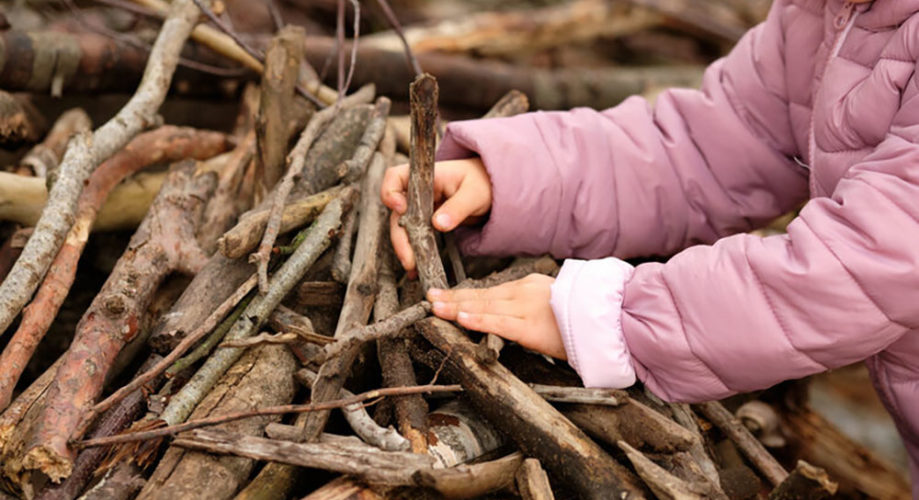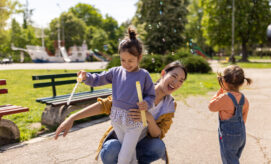-
Sticks/twigs
-
Beads (glass, plastic, or wood)
-
Nuts and bolts
-
Leaves
-
Pinecones
-
Uncooked pasta
-
Pieces of fabric
-
Keyrings
-
Tape
-
Cotton balls and q-tips
-
Pom-poms
-
Mason jar rings
-
Silicone kitchen utensils and cooking materials
-
Scrabble letters or other game pieces
-
Pieces of wood (ensure that there are no sharp pieces that could give children splinters)
-
Recycled plastic water bottles (lids can be offered separately as another item!)
-
Paint swatches (free at local hardware stores!)
Larger Items:
-
Plastic milk crates
-
Wood pallets
-
Cardboard boxes (of all shapes and sizes)
-
Pots, pants, or other cooking items
-
Large wooden spools
-
Empty baskets
-
Tree stumps
-
Cardboard kraft paper rolls
-
Pool noodles
What Kinds of Skills Are Learned with Loose Parts?
There are many benefits for young children’s learning and skill development when they engage in loose parts play. Because this kind of play is open-ended, it encourages children to be creative, think critically, and solve problems as they arise. As children build, construct, and create, they have opportunities to test their own ideas and try to figure out how to make their visions come to life.
Some smaller loose parts will encourage children to practice manipulating objects in their hands and fingers, which will support fine motor skills. Some larger loose parts, such as tree stumps, or big pieces of cardboard might encourage children to build tall or mobile structures. This kind of play enables children to engage large motor skills as they lift large objects, climb, and reach up high. Older children will enjoy working together with their peers to build and create with loose parts as they learn important skills in communication, teamwork, and collaboration.
What is the Role of the Teacher?
While loose parts play is directed by children, it is still important to have educators or caregivers available to facilitate and support the activity. As children engage in loose parts play, educators support them by observing, taking note of children’s interests and ideas, and ensuring safety.
An article from The Oregon Association for the Education of Young Children (ORAEYC) notes that “Meeting children where they are is essential, but no good teacher simply leaves them there…in settings with developmentally appropriate loose parts play, adults provide loose parts and make them accessible and available. They support children’s initiatives and inquiry. They make sure children can explore and discover new insights. They look for opportunities to broaden and deepen the learning, while allowing for open-ended play and prompting meaningful connections and experiences.”







